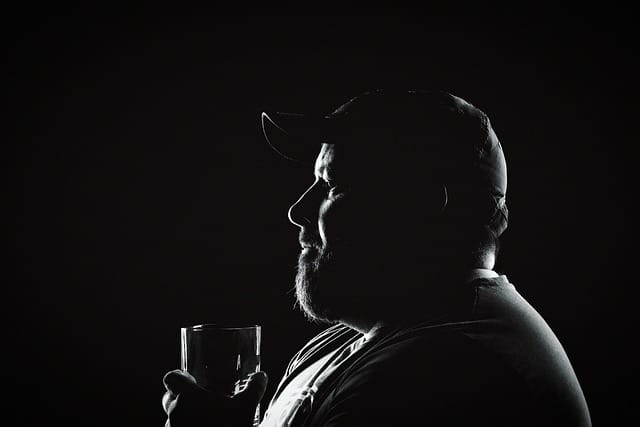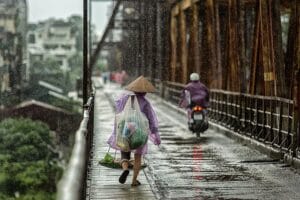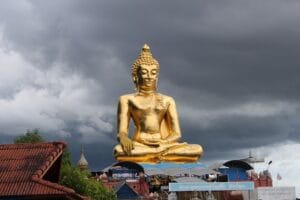Low light portrait photography without flash can be challenging, but it also offers a unique opportunity to create dramatic and artistic images. The absence of artificial lighting forces photographers to rely on natural light, using creative techniques to achieve well-exposed, sharp, and atmospheric portraits. Whether you’re shooting indoors or outdoors at night, mastering this style of photography can elevate your skills and produce stunning results.
In this comprehensive guide, we will delve into the essential techniques for capturing beautiful portraits in low light without relying on a flash. From understanding your camera settings to using available light creatively, these tips will help you excel in low light portrait photography without flash.
What is Low Light Portrait Photography Without Flash?
Before we dive into the techniques, let’s clarify what low light portrait photography without flash actually entails. As the name suggests, it involves capturing portraits in conditions where the available light is minimal, and no artificial lighting or flash is used. The key challenges in this type of photography include handling noise, avoiding blur, and making the most of whatever light is available.
Natural light sources such as candles, street lamps, moonlight, or even the dim glow of a phone screen can be used to create compelling portraits. Mastering this style requires a solid understanding of camera settings, equipment, and composition.
1. Understand Camera Settings for Low Light Portrait Photography Without Flash
When tackling low light portrait photography without flash, one of the most crucial aspects is understanding your camera’s settings. The three main elements to focus on are ISO, shutter speed, and aperture, also known as the exposure triangle.
ISO Settings
ISO determines how sensitive your camera’s sensor is to light. In low light conditions, increasing your ISO allows more light to hit the sensor, making your image brighter. However, raising the ISO also introduces noise (grain), which can affect the quality of your image. The trick is to find the right balance between brightness and noise, usually by experimenting with your camera’s settings.
For low light portrait photography without flash, a typical ISO setting ranges from 800 to 3200. Some modern cameras perform exceptionally well at higher ISOs, so it’s essential to know your camera’s capabilities.
Shutter Speed
Shutter speed controls the amount of time your camera’s sensor is exposed to light. A slower shutter speed allows more light to reach the sensor, which is beneficial in low light conditions. However, slower shutter speeds increase the risk of motion blur, especially if your subject or the camera moves during the exposure.
For portraits, you’ll want to maintain a shutter speed of at least 1/60th of a second to minimize blur. Using a tripod can help stabilize the camera, allowing you to use slower shutter speeds without sacrificing sharpness.
Aperture
A wide aperture (low f-stop number) allows more light to hit the sensor, which is crucial in low light portrait photography without flash. Lenses with a wide aperture, such as f/1.2 or f/1.8, are ideal for low light situations because they allow more light into the camera while also creating a shallow depth of field. This helps isolate the subject and creates a soft, blurred background, adding depth and dimension to your portraits.
2. Use a Fast Lens for Low Light Portrait Photography Without Flash
One of the best investments you can make for low light portrait photography without flash is a fast lens. Fast lenses have wide maximum apertures, such as f/1.2, f/1.4, or f/1.8, which allow more light to enter the camera. These lenses are specifically designed for low light conditions and will help you capture sharp, well-lit portraits even in challenging lighting environments.
Prime Lenses vs. Zoom Lenses
Prime lenses, which have a fixed focal length, are often faster than zoom lenses and are a popular choice for low light portrait photography without flash. For example, a 50mm f/1.8 or an 85mm f/1.4 prime lens is perfect for portrait work because of their wide apertures and excellent sharpness.
Zoom lenses, on the other hand, tend to have narrower apertures, which may not perform as well in low light. However, there are high-end zoom lenses with wider apertures, such as f/2.8, that can also be effective in low light scenarios.
3. Make the Most of Available Light Sources
In low light portrait photography without flash, natural and artificial light sources become your primary tools. Learning how to use these light sources creatively will help you produce stunning portraits even when light is scarce.
Window Light
If you’re shooting indoors, use window light to your advantage. Position your subject near a window to take advantage of soft, diffused light. You can create moodier or more dramatic images by adjusting the angle at which the light falls on your subject.
Street Lamps and Urban Lighting
For outdoor portraits, street lamps, neon signs, or even car headlights can serve as excellent light sources for low light portrait photography without flash. These urban light sources provide a warm, atmospheric glow that can add character and depth to your images.
Candlelight
Shooting by candlelight is another great way to create intimate and dramatic portraits. The soft, warm glow of candles can enhance the mood of the scene, adding an artistic touch to your portraits. Keep in mind that candlelight is a very low-intensity light source, so you may need to adjust your ISO and aperture settings accordingly.
4. Stabilize Your Camera for Sharper Images
Camera shake is a common issue in low light portrait photography without flash, as slower shutter speeds are often required to let in more light. To avoid blur caused by camera shake, stabilizing your camera is essential.
Use a Tripod
A tripod is one of the most effective ways to stabilize your camera in low light conditions. By mounting your camera on a tripod, you can use slower shutter speeds without worrying about hand-held shake. This is especially useful when shooting in very low light environments where you need to keep the shutter open for longer.
Utilize Image Stabilization
Many modern cameras and lenses come equipped with image stabilization (IS) or vibration reduction (VR) features. These technologies help reduce camera shake, allowing you to shoot at slower shutter speeds while maintaining sharpness. Image stabilization is particularly useful in handheld low light portrait photography without flash.
5. Shoot in RAW Format for Greater Editing Flexibility
When it comes to low light portrait photography without flash, shooting in RAW format is highly recommended. RAW files contain all the data captured by your camera’s sensor, giving you much more flexibility in post-processing. In low light situations, RAW files retain more detail in both the highlights and shadows, allowing you to recover information that would otherwise be lost in a JPEG file.
By shooting in RAW, you can easily adjust exposure, white balance, and noise reduction in editing software like Adobe Lightroom or Photoshop without degrading the quality of your image.
6. Master the Art of Composition in Low Light Portrait Photography Without Flash
In low light situations, composition becomes even more crucial. The scarcity of light can add drama to your images, but only if you frame your shots thoughtfully. Experiment with different angles, framing techniques, and compositions to maximize the impact of the available light.
Rule of Thirds
Using the rule of thirds can help create balanced and visually appealing portraits. Imagine your frame is divided into nine equal sections by two horizontal and two vertical lines. Position your subject along these lines or at their intersection points to create a more dynamic and engaging composition.
Negative Space
Negative space can also play an important role in low light portrait photography without flash. By incorporating empty or dimly lit areas into your frame, you can draw more attention to your subject and create a sense of isolation or contemplation.
7. Pay Attention to the Background
When shooting in low light, it’s easy to focus entirely on your subject and forget about the background. However, the background plays a vital role in the overall composition of your image.
Simplify the Background
A busy or distracting background can take away from the impact of your portrait. In low light portrait photography without flash, it’s often a good idea to simplify the background by either choosing a plain setting or using a wide aperture to blur it out. This will help keep the viewer’s attention on your subject.
Look for Light in the Background
In some cases, using light sources in the background can add depth and context to your image. Streetlights, distant candles, or illuminated signs can provide beautiful bokeh effects that enhance the mood of your portrait.
8. Focus on the Eyes for Sharp Portraits
The eyes are the most important part of any portrait, and this is especially true in low light portrait photography without flash. Ensure that the eyes are in sharp focus, as they are often the focal point that draws viewers into the image.
Use Single-Point Focus
To achieve the best results, switch to single-point autofocus mode and manually select the focus point on your subject’s eyes. This will help ensure that the eyes are tack-sharp, even in dim lighting conditions.
Use Manual Focus if Necessary
In extremely low light situations, your camera’s autofocus system might struggle to lock onto your subject. In these cases, switching to manual focus and adjusting the focus ring until the eyes are sharp can be the best solution.
9. Use Reflections for Creative Effects
Reflections can add a creative and unique element to your portraits. Mirrors, glass, or even water can be used to reflect light or your subject, creating interesting compositions that stand out.
Glass Reflections
Shooting through glass can add depth and texture to your portraits. In low light portrait photography without flash, reflections on a windowpane or mirror can introduce intriguing lighting effects and add visual interest to your images.
10. Embrace Noise and Grain for a Vintage Feel
While most photographers aim to minimize noise in their images, grain can actually enhance the mood and atmosphere of your low light portraits. In fact, some photographers intentionally add grain in post-processing to give their images a more vintage or film-like feel.
Noise as an Artistic Choice
Rather than seeing noise as a flaw, embrace it as part of the aesthetic of low light portrait photography without flash. Grainy images can evoke a sense of nostalgia or raw emotion, making them perfect for certain types of portrait work.
Conclusion: Mastering Low Light Portrait Photography Without Flash
Low light portrait photography without flash is a rewarding yet challenging art form. By mastering your camera settings, using available light sources, and employing creative techniques, you can capture stunning portraits that are rich in atmosphere and emotion. With patience and practice, you’ll be able to overcome the limitations of low light and create beautiful, compelling images that stand out.






